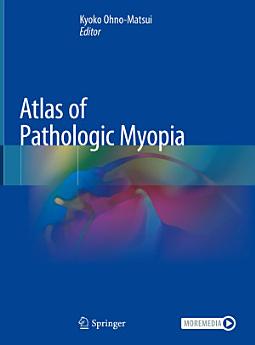Atlas of Pathologic Myopia
Kyoko Ohno-Matsui
Sep 2020 · Springer Nature
E-Book
202
Seiten
reportBewertungen und Rezensionen werden nicht geprüft Weitere Informationen
Über dieses E-Book
This Atlas provides many beautiful images obtained with state-of-the-art technologies, including optical coherence tomography (OCT), OCT angiography, fundus autofluorescence, and wide-field fundus imaging, as well as traditional images and fluorescein/ICG angiograms. Gathered at the world’s largest High Myopia Clinic, the images are based on the long-term follow-up data of more than 6,000 patients from Japan and abroad. Recent advances in imaging technologies have yielded many new observations and allowed us to detect new lesions, e.g. myopic traction maculopathy (or macular retinoschisis) and dome-shaped macula. An especially interesting aspect: the images obtained by ‘3D MRI of the eye’ and ‘ultra wide-field OCT’ to visualize staphylomas. These techniques were established by the editor’s group and make it possible to record the entire shapes of the eye, offering a scan width of up to 23 mm and scan depth of 5 mm. They have since been used to visualize posterior staphyloma,which was previously impossible to view because it spanned such a wide range of the eye. In addition, readers will learn what types of eye deformity occur in pathologic myopia and how they damage the macula/optic nerve. With this Atlas, readers will learn how to accurately diagnose each lesion of pathologic myopia, how eye deformity causes blinding complications, and how to identify patients with a poor prognosis. In short, it provides essential information that can’t be found elsewhere.
Autoren-Profil
Kyoko Ohno-Matsui, MD, PhD
Kyoko Ohno-Matsui is Professor and Chairperson of the Department of Ophthalmology and Visual Science at Tokyo Medical and Dental University (TMDU). She is also Chief of the Advanced Clinical Center for Myopia. She graduated from Yokohama City University Medical School and received her Ph.D. at Tokyo Medical and Dental University. She did her postdoctoral fellowship at Wilmer Eye Institute at Johns Hopkins University.
Kyoko Ohno-Matsui is Professor and Chairperson of the Department of Ophthalmology and Visual Science at Tokyo Medical and Dental University (TMDU). She is also Chief of the Advanced Clinical Center for Myopia. She graduated from Yokohama City University Medical School and received her Ph.D. at Tokyo Medical and Dental University. She did her postdoctoral fellowship at Wilmer Eye Institute at Johns Hopkins University.
Dieses E-Book bewerten
Deine Meinung ist gefragt!
Informationen zum Lesen
Smartphones und Tablets
Nachdem du die Google Play Bücher App für Android und iPad/iPhone installiert hast, wird diese automatisch mit deinem Konto synchronisiert, sodass du auch unterwegs online und offline lesen kannst.
Laptops und Computer
Im Webbrowser auf deinem Computer kannst du dir Hörbucher anhören, die du bei Google Play gekauft hast.
E-Reader und andere Geräte
Wenn du Bücher auf E-Ink-Geräten lesen möchtest, beispielsweise auf einem Kobo eReader, lade eine Datei herunter und übertrage sie auf dein Gerät. Eine ausführliche Anleitung zum Übertragen der Dateien auf unterstützte E-Reader findest du in der Hilfe.





